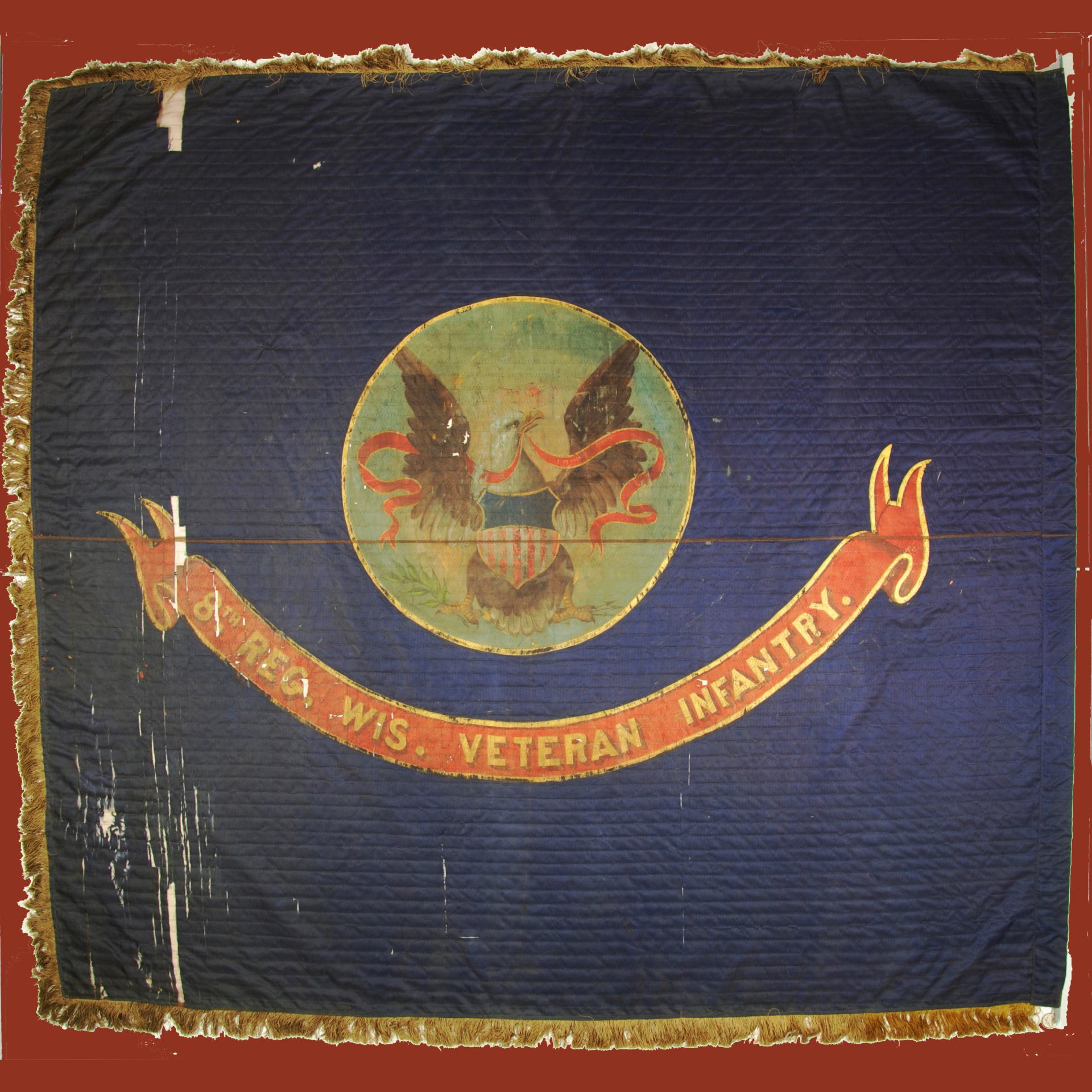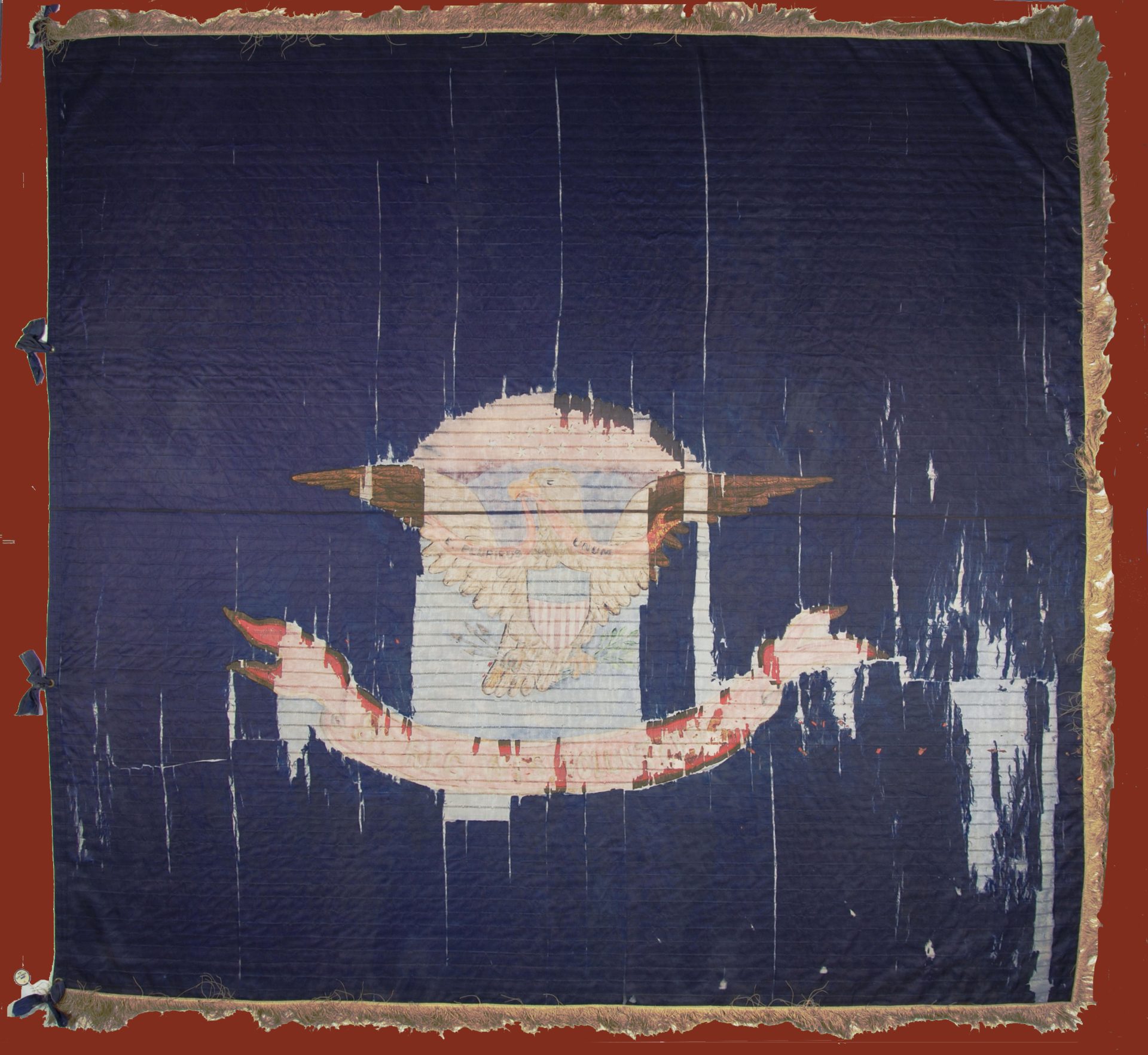Organization
The Eighth Wisconsin Infantry Regiment (8th Wisconsin Infantry Regiment), also known as the Eagle Regiment, mustered into the service of the United States on September 13, 1861, at Camp Randall, Madison, Wisconsin. They left the state on October 12th for Missouri.
Active Duty
At the start, they engaged in various expeditions and engagements in Southeast Missouri, including the battle of Fredericktown on October 21, 1961. Then, the Eighth participated in the siege of Island No. 10 from March 15 to April 8, 1862. In late April, the Eighth transferred to Corinth, Mississippi, and participated in the siege of Corinth (April 29-May 30), the battles of Farmington (May 9), battle of Iuka (September 19), and the battle of Corinth (October 3-4).
In November 1862, an army under General Grant was collected at Grand Junction, TN, to advance overland on Vicksburg-what was known as the Central Mississippi Campaign. However, with the destruction of the store of supplies at Holly Springs, December 20, the plan of General Grant changed. Thus, operations were conducted from Memphis on the river.
The Eighth reached Youngs Point, LA, on March 29, 1863, where they participated in many of the battles prior to the siege of Vicksburg. After the surrender of Vicksburg on July 4, 1863, they participated in several minor expeditions in northern Mississippi and Louisiana. Namely, they assisted the Meridian Campaign in Mississippi (February 3- March 2), and the Red River Campaign in Louisiana (March 10-May 22, 1864).
In November 1864, they joined forces sent in pursuit of the Confederates under General Price through Arkansas and Missouri. In late November, they transferred to Nashville, to help re-enforce the Union Army under General Thomas. Consequently, they participated in the battle of Nashville from December 15-16. Afterwards, they took part in the pursuit of Hood to the Tennessee River from December 17 to 28.
At this time, the Regiment took part in many minor expeditions until February, when they transferred to New Orleans. In New Orleans, they attached to the forces campaigning for the reduction of the Confederate defenses at Mobile. Next, they participated in the siege of Spanish Fort and Fort Blakely from March 27 to April 8, 1865. Then, they engaged in the assault and capture of Fort Blakely on April 9 and occupation of Mobile on April 11. After the Mobile campaign, the Eighth remained in central Alabama during the summer. In the end, they mustered out of the service on September 5th, 1865, in Alabama, before proceeding to Madison where they disbanded.
Casualties
The Eighth Wisconsin Infantry Regiment lost 6 Officers and 53 Enlisted men to mortal wounds. They lost 2 Officers and 219 Enlisted men to disease. In total, the Eight Regiment lost 280 men.
For Further Research
Search our collections for photos and artifacts from Wisconsin in the Civil War. Read about other Wisconsin Civil War regiments. For detailed regimental histories of the U.S. Civil War, consult the Frederick H. Dyer, Compendium of the War of the Rebellion: Regimental Histories.
The histories above, unless otherwise noted, are adopted from Charles E. Estabrook, ed., Records and Sketches of Military Organizations, (Madison, 1914).
Standard, 8th Wisconsin Infantry Regiment

Blue silk field with designs in colored paint; in center, design of Wis. State Seal within gold-bordered circle 26 1/4" diameter ; below seal, red ribbon with gold border and gold letters marked "8th REG. WIS. VETERAN INFANTRY"; reverse of flag with U.S. seal in place of state seal; gold silk fringes along three sides; attachment to pole by edge folded into sleeve; minimal damage in upper and lower right corners.
Standard, 8th Wisconsin Infantry Regiment

Blue silk field with designs in colored paint; in center, design of U.S. eagle with shield and arrows, stars above, holding red ribbon marked "E PLURIBUS UNUM"; below eagle, wide red ribbon marked "8th REG. WIS. VOLUNTEERS"; design almost entirely reconstituted during conservation-only original portions remaining, tips of eagle's wings and fragments of ribbon; gold silk fringes along three sides; attachment to pole by 4 brass grommets and silk ties.

